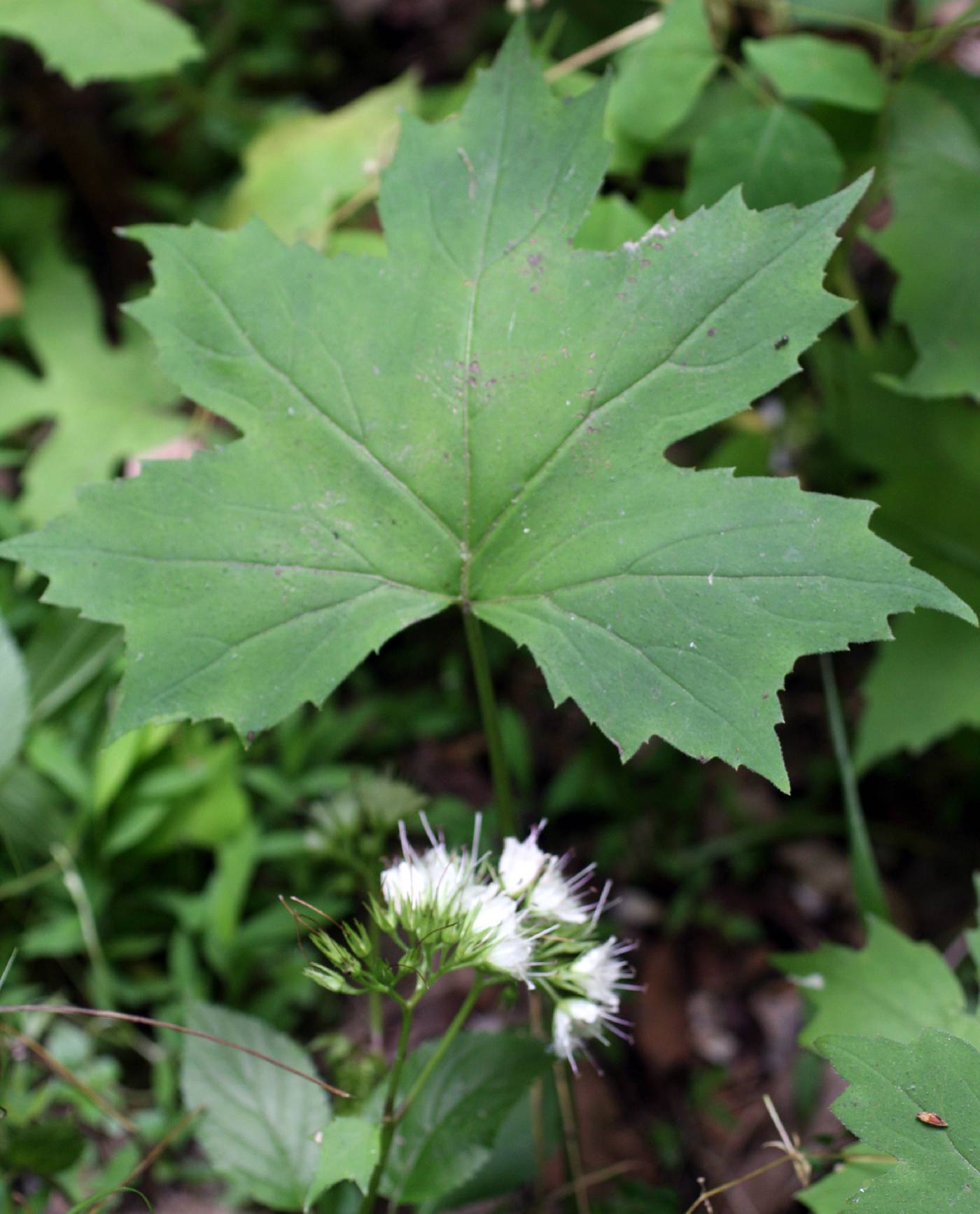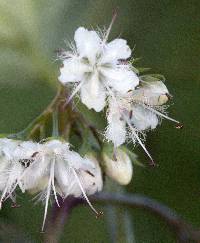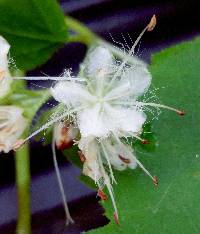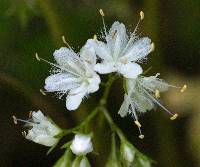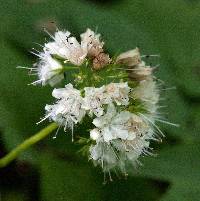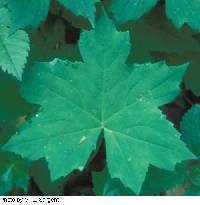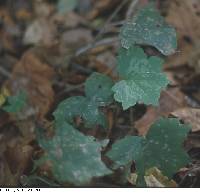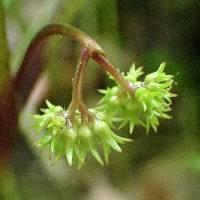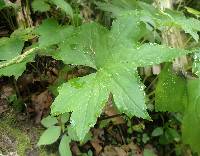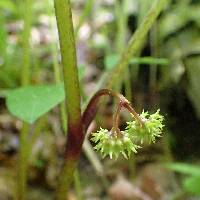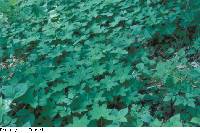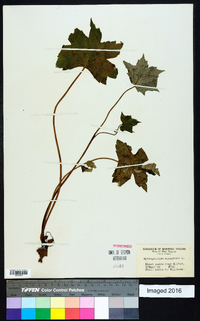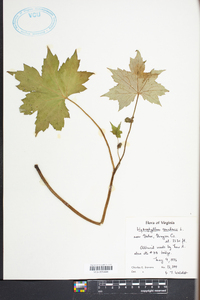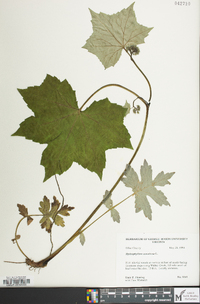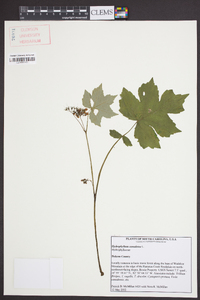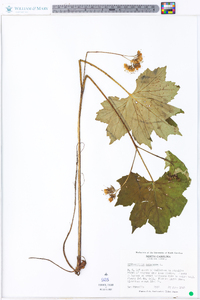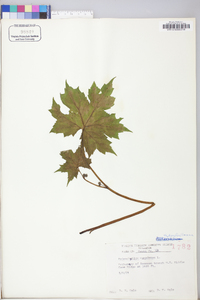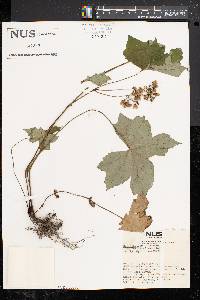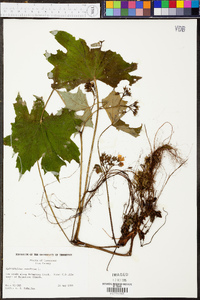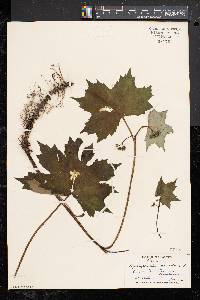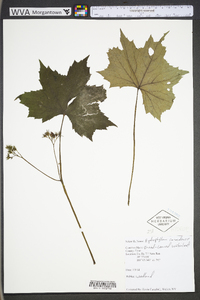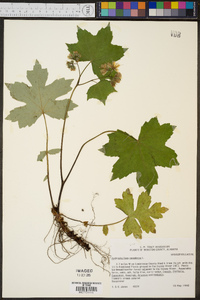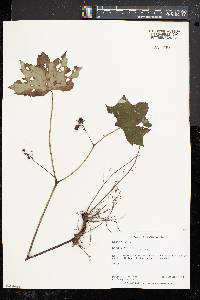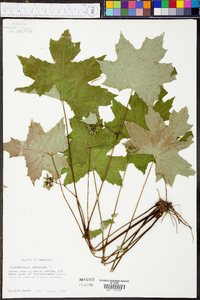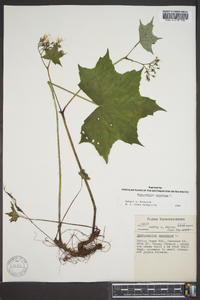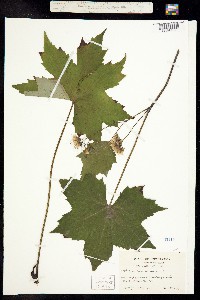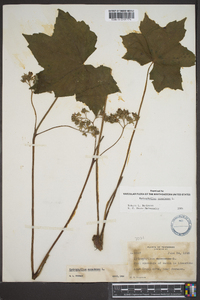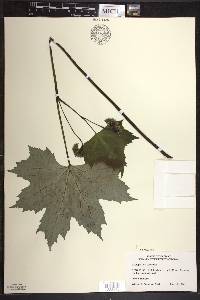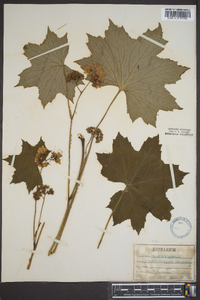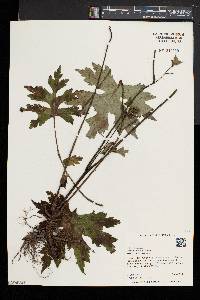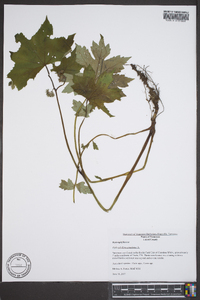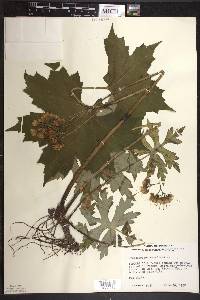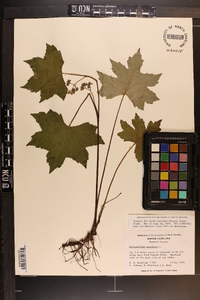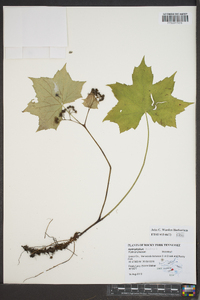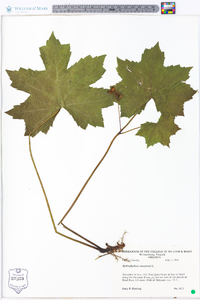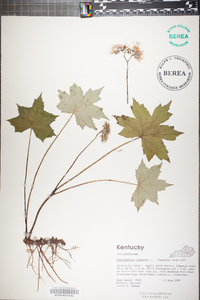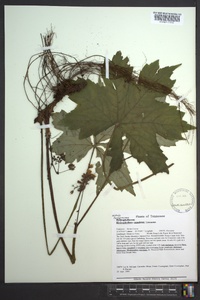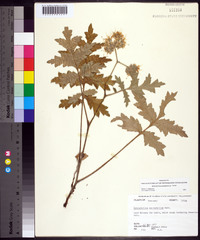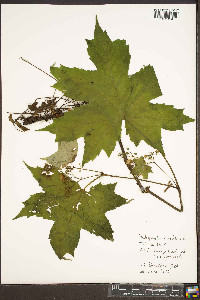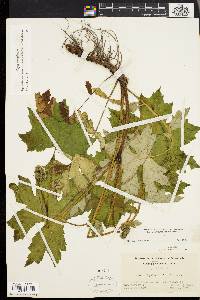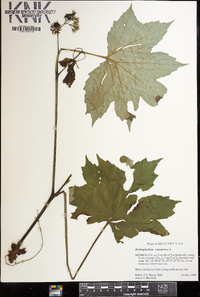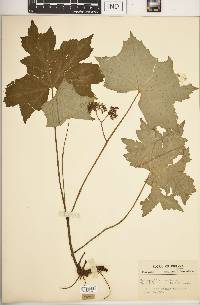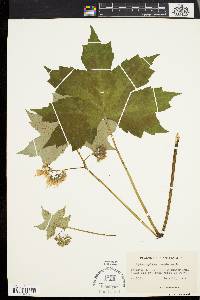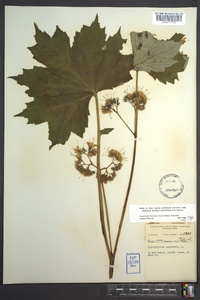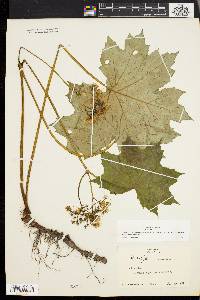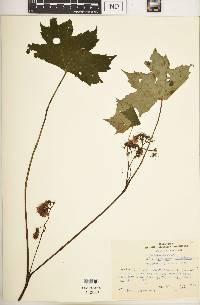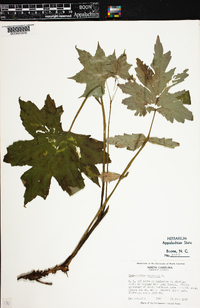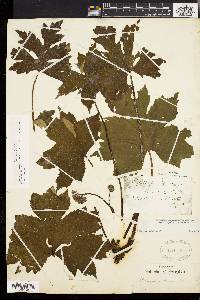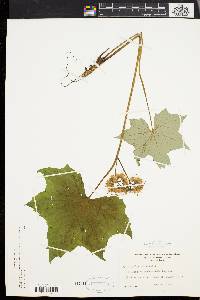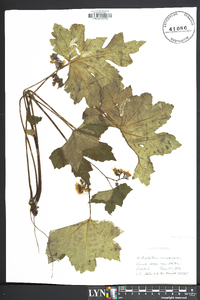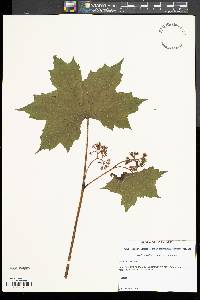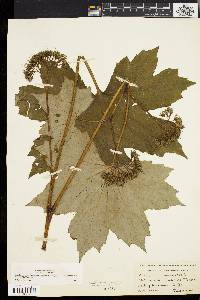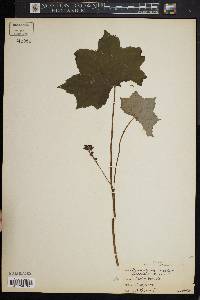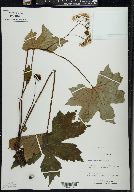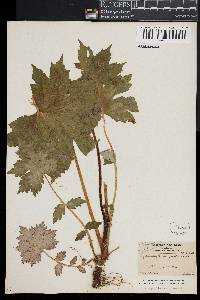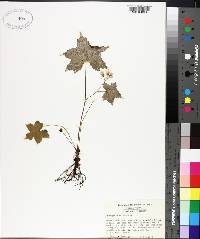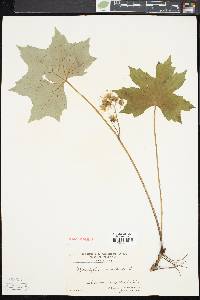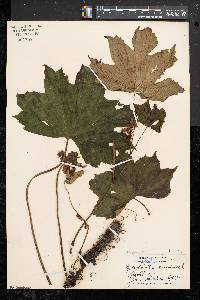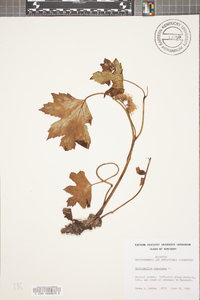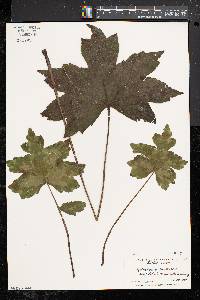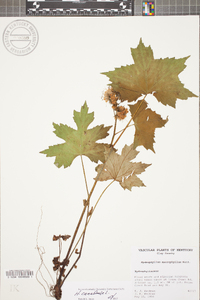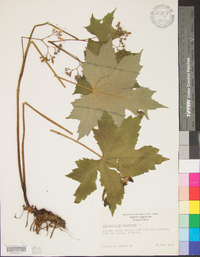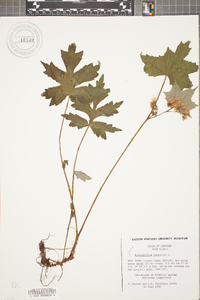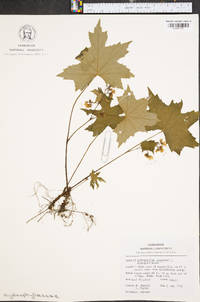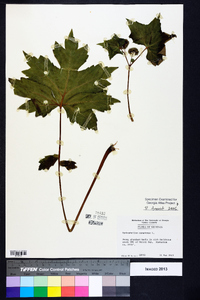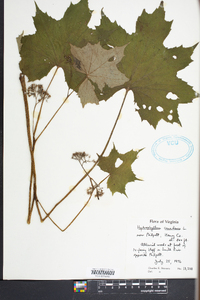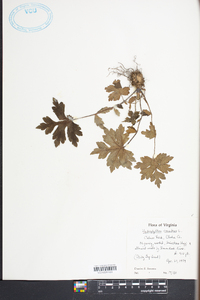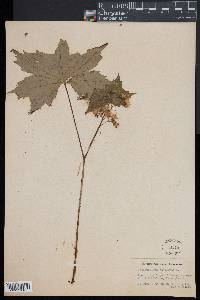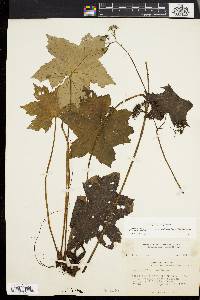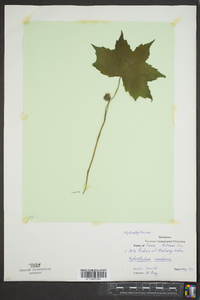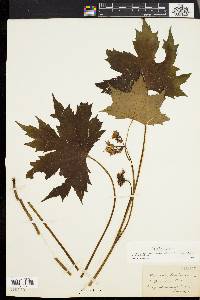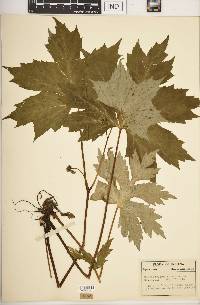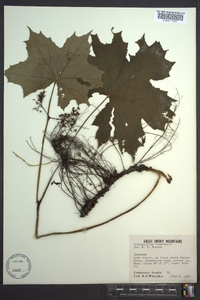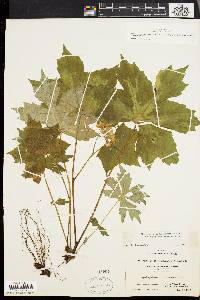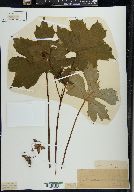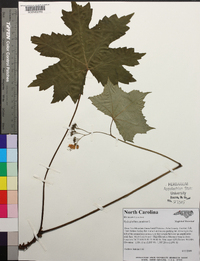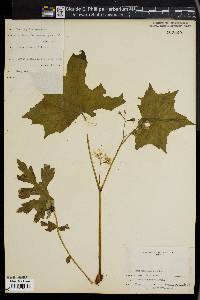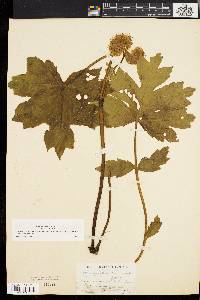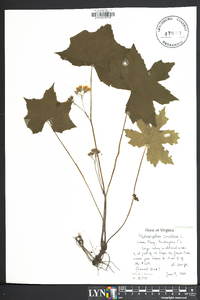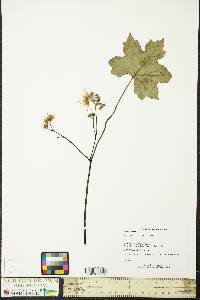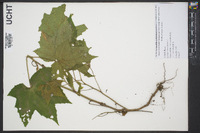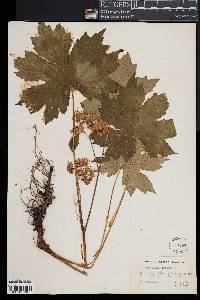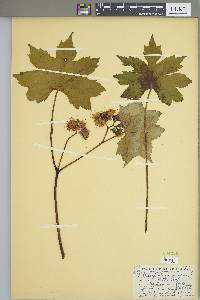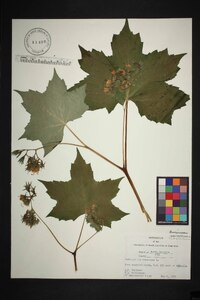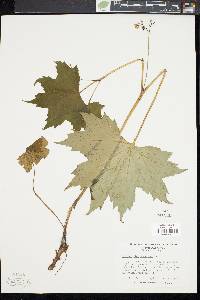
|
|
|
|
Family: Boraginaceae
Blunt-Leaf Waterleaf
|
Perennial herb 30 - 70 cm tall Stem: erect, mostly hairless, but possibly with some scattered, stout, spreading hairs up to 1 mm long. Leaves: alternate, long-stalked (usually longer than inflorescence branches), 5 - 25 cm wide, somewhat circular in outline, but shallowly, palmately five- to nine-lobed, with lobes long-pointed at tips, and coarsely toothed or deeply cut along edges. The leaf base is indented, thus appearing as the top of an upside-down heart. Inflorescence: of compact, rounded, branching clusters on short (shorter than the leaf stalks), forked stalks arising from the upper leaf axils. The inflorescence branches, as well as the individual flower stalks, are mostly hairless, but they can be sparsely hairy with stiff hairs all of one length. Flowers: short-stalked, nearly white (sometimes pink-purple), 0.8- 1.2 cm long, radially symmetric, and tubular. Sepals: five, but fused at the very base, then separating into long, linear, very narrow, mostly hairless lobes with pointed tips. The sepals sometime have a minute (up to 0.5 mm long), upright, tooth between each lobe base. Petals: five, but fused for over half their length, then separating into shorter, erect, flat-tipped lobes. Five linear nectaries line the inside of the petal tube opposite each petal lobe. Stamens: five, filaments more or less hairy, attached near the base of the petal tube (between the linear nectaries), alternating with the petal lobes, and reaching 3 - 6 mm beyond the petals. Pistil: with a single-chambered, superior, bristly ovary; and a single style ending in two, short, rounded stigmas, which reach 4 - 5 mm beyond the petals. Fruit: a spherical, single-chambered, two-valved capsule with one to three seeds. Roots: fleshy, fibrous, with a long, scaly rhizome. Similar species: Hydrophyllum canadense is similar to H. virginianum, but that species has stem hairs all under 0.5 mm long, the sepals have stiff bristly hairs, the inflorescence over-tops the leaves, and the inflorescence branches are covered with short, appressed, ascending hairs. Also similar is H. appendiculatum, but that species also has the inflorescence over-topping the leaves, the leaf bases are inversely wide v-shaped or cut straight across, the sepals have large reflexed earlobe-shaped appendages alternating between the lobe bases, the inflorescence branches have hairs of two different lengths, and there are two different types of stem hairs: slender hairs up to 0.5 mm long, and 2 - 3 mm long stiff, spreading hairs. Flowering: late May to June Habitat and ecology: Very localized to the eastern beech (Fagus) forests of the Chicago Region. Occurence in the Chicago region: native Author: The Field Museum Fibrous-rooted perennial from long rhizomes; stems 3-5 dm, the upper part, infl, and cal glabrous or with scattered stout spreading hairs to 1 mm; cauline lvs usually overtopping the cymes, 1-2 dm wide and nearly as long, cordate at base, palmately 5-9-lobed, seldom to beyond the middle, the lobes acuminate, coarsely toothed or incised; cal rarely with minute appendages at the sinuses; cor white to pink-purple, 8-12 mm, the lobes shorter than the tube; stamens exsert 3-6 mm; style exsert 4-5 mm; 2n=18. Rich moist woods; s. Vt. and w. Mass. to Md. and in the mts. to Ga., w. to Wis., Ill., Mo. and n. Ark. May, June. Gleason, Henry A. & Cronquist, Arthur J. 1991. Manual of vascular plants of northeastern United States and adjacent Canada. lxxv + 910 pp. ©The New York Botanical Garden. All rights reserved. Used by permission. From Flora of Indiana (1940) by Charles C. Deam Infrequent to rare in deep humus in moist soil, usually toward the bases of deep wooded ravines. Generally associated with beech and usually forming large colonies. In cultivation where it is relieved of competition it spreads rapidly. ...... Indiana Coefficient of Conservatism: C = 8 Wetland Indicator Status: FACW |
|
|
|

